Explore the benefits of dish towel, how they compare to drying racks for effective sanitation. Discover tips on hanging, storing, and folding for optimal use.
When it comes to maintaining a clean and hygienic kitchen, the battle between using a dish towel and drying rack for sanitation has been a long-standing debate. Both methods have their merits and demerits, but which one is truly superior? In this article, we will delve into the world of dish cleaning cloths and drying racks, comparing their sanitation effectiveness, ease of use, eco-friendliness, and overall convenience. By the end of this read, you'll have a clearer understanding of which method suits your needs and preferences best.
What is a dish towel?
A dish towel is a small, absorbent cloth used in the kitchen for drying dishes, hands, and other kitchen surfaces. It is typically made of cotton or linen and is often patterned or textured.
What is the difference between a dish towel and a kitchen towel?
Although "kitchen towel" and "dish towel" are frequently used the same way, there is a small distinction between the two. A dish cleaning towel is specifically designed for washing and drying dishes, while a kitchen towel can be used for a variety of tasks in the kitchen, such as drying hands, wiping up spills, or cleaning counters.
Dish Towel or Drying Rack?
Whether you should use a dish towel or a drying rack depends on your personal preferences and needs.
Dish towels are absorbent and can be used to dry dishes, hands, and other kitchen surfaces. They are relatively less expensive and can easily be found. However, they can be a breeding ground for bacteria if they are not washed regularly.
Drying racks are a more sanitary option, as they allow dishes to air dry. They also take up less space than dish towels. However, they can be more expensive and time-consuming to set up and use.
Here are some factors to consider when deciding between a dish towel and a drying rack:
- Space: If you have limited counter space, a drying rack may be a better option.
- Budget: Dish towels are typically more affordable than drying racks.
- Sanitary concerns: If you are concerned about bacteria, a drying rack may be a better option.
- Personal preference: Ultimately, the best option for you will depend on your personal preferences and needs.
If you are still not sure which option is right for you, you can always try both and see which one you prefer.
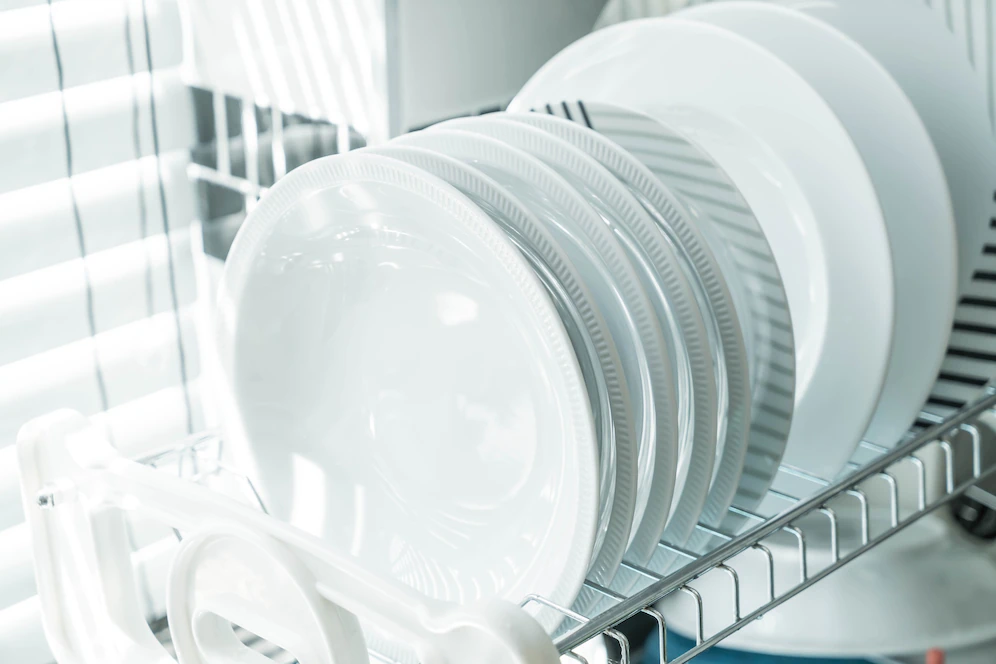
Here are some additional tips for using dish cleaning towels and drying racks:
- Wash dish cloths regularly in hot water with a mild detergent.
- Dry dish cleaning towels on a high setting to prevent the growth of bacteria.
- Air-dry drying racks whenever possible.
- Replace dish cleaning towels and drying racks regularly, especially if they start to look or smell dirty.
By following these tips, you can keep your dishes clean and sanitary, regardless of whether you use a dish towel or a drying rack.
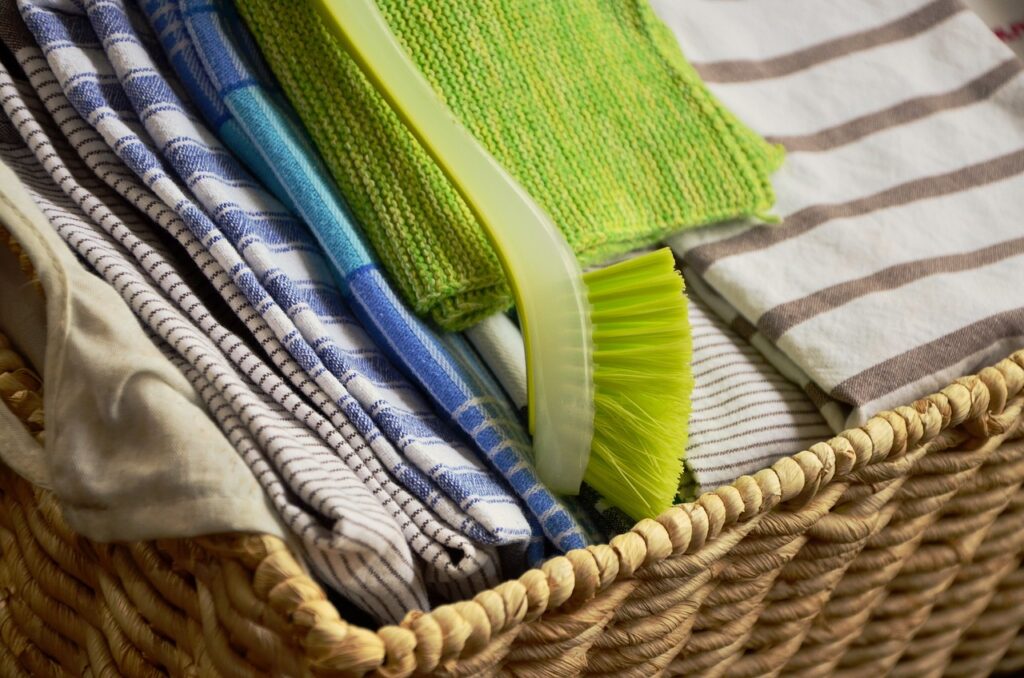
What are the different types of dish towels?
There are many different types of dish towels available, made from a variety of materials and in a variety of styles. Some of the most common types of dish cleaning towels include:
- Cotton dish towels: Cotton dish cloths are the most common type of dish cleaning towel. They are absorbent, durable, and relatively inexpensive.
- Linen dish towels: Linen towels are more expensive than cotton towels, but they are also more absorbent and durable. They also have a natural tendency to resist bacteria, making them a good choice for those who want to avoid using paper towels.
- Microfiber dish towels: Microfiber dish cloths are very absorbent and can be used to clean up both wet and dry messes. They are also lint-free, making them a good choice for drying dishes without leaving behind any residue.
- Bamboo dish towels: Bamboo dish cleaning towels are made from a sustainable material and are known for being soft, absorbent, and quick drying.
How to care for dish towels?
Dish cleaning towels should be washed regularly in hot water with a mild detergent. They should also be dried on a high setting to prevent the growth of bacteria.
Tips for using dish towels:
Here are a few tips for using dish cloth towels:
- Use a separate dish cloth for washing and drying dishes. This will help to prevent the spread of bacteria.
- Rinse dish cleaning towels thoroughly after washing them. This will help to remove any soap residue that could leave behind a film on your dishes.
- Air-dry dish cloth whenever possible. This will help to extend their lifespan.
- Replace dish cleaning towels regularly, especially if they start to look or smell dirty.
Dish cloths are a versatile and essential tool in any kitchen. By choosing the right type of dish cloth and caring for it properly, you can keep your dishes clean and sanitary for years to come.
In addition to the above, here are some other interesting facts about dish cleaning towels:
- The first dish cleaning towels were made from linen and were used in ancient Egypt.
- The first cotton dish cleaning towels were made in the 18th century.
- Dish towels were originally used for drying hands, but they eventually became the primary tool for drying dishes.
- Dish cloths are often decorated with patterns or sayings.
- Some people believe that dish cleaning towels can absorb negative energy.
- They can be used to make potholders, coasters, and other household items.
Sanitation Effectiveness: Battle of the Germs
Dish Towel Sanitation
Also known as Dishcloth, are a common kitchen staple, used for a variety of tasks including drying hands, wiping surfaces, and, of course, drying dishes. However, their sanitation effectiveness can be a double-edged sword. While they can absorb moisture and remove visible dirt, they can also become breeding grounds for harmful bacteria if not properly cared for. Frequent washing and disinfecting are essential to prevent cross-contamination.
Drying Rack Sanitation
On the other hand, drying racks offer a distinct advantage in terms of sanitation. By allowing dishes to air dry without physical contact, the risk of bacterial growth is significantly reduced. Water droplets naturally evaporate, and the open design of drying racks promotes proper air circulation, further hindering bacteria from thriving.
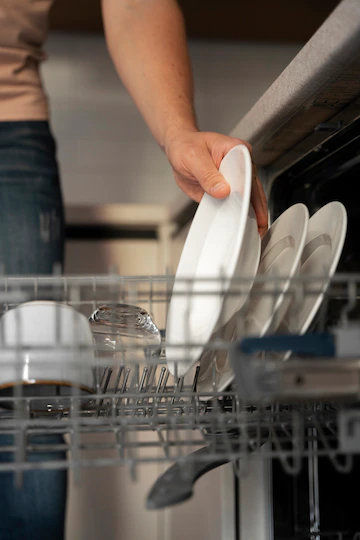
Ease of Use and Convenience: Hands-On vs. Hands-Free
Dish Towel Convenience
Dish cloths are undeniably convenient due to their immediate availability. They're perfect for quickly wiping spills and drying utensils, providing a hands-on approach to cleaning. However, this convenience can be compromised if towels are not changed frequently, potentially spreading germs instead of eliminating them.
Drying Rack Ease
Drying racks offer a more hands-free experience. Once you've placed your dishes on the rack, you can simply leave them to dry without constant monitoring. This frees up your time and ensures that your dishes air dry in a clean and hygienic manner.
Eco-Friendliness: Green Kitchen Practices
Dish Towel Eco-Factor
From an eco-friendly perspective, dishcloths have their merits. Reusable and washable, they generate less waste compared to disposable alternatives. However, their environmental impact increases if they need to be replaced frequently due to bacterial concerns.
Drying Rack Eco-Factor
Drying racks align with green kitchen practices as well. By reducing the need for paper towels and minimizing water usage (no need for excessive towel laundering), they contribute to a more sustainable lifestyle.
Cost Comparison: Penny-Pinching or Long-Term Investment?
Dish Towel Costs
They might seem economical at first glance, but the recurring expenses of detergent, water, and energy for laundering can add up over time. Additionally, the need for replacement due to wear and tear or bacterial buildup can strain your wallet.
Drying Rack Investment
Investing in a quality drying rack could initially seem pricier, but it's a one-time expense that pays off over the long run. With proper care, a durable drying rack can last for years, reducing the need for constant replacements.
Common Misconceptions: Separating Fact from Fiction
Myth: Dish Towels are Self-Cleaning
Some believe that dish towels miraculously clean themselves over time. However, bacteria thrive in damp environments, making regular washing imperative.
Myth: Drying Racks are Space Consuming
While drying racks do take up counter space, many modern designs are collapsible or can be hung over the sink, optimizing your kitchen's layout.
Making an Informed Choice: What’s Right for You?
After weighing the pros and cons of both methods, the choice ultimately depends on your priorities. If immediate convenience is key, dish towels might be your go-to. For a more hands-free, eco-friendly, and hygienic approach, investing in a quality drying rack could be the better option.
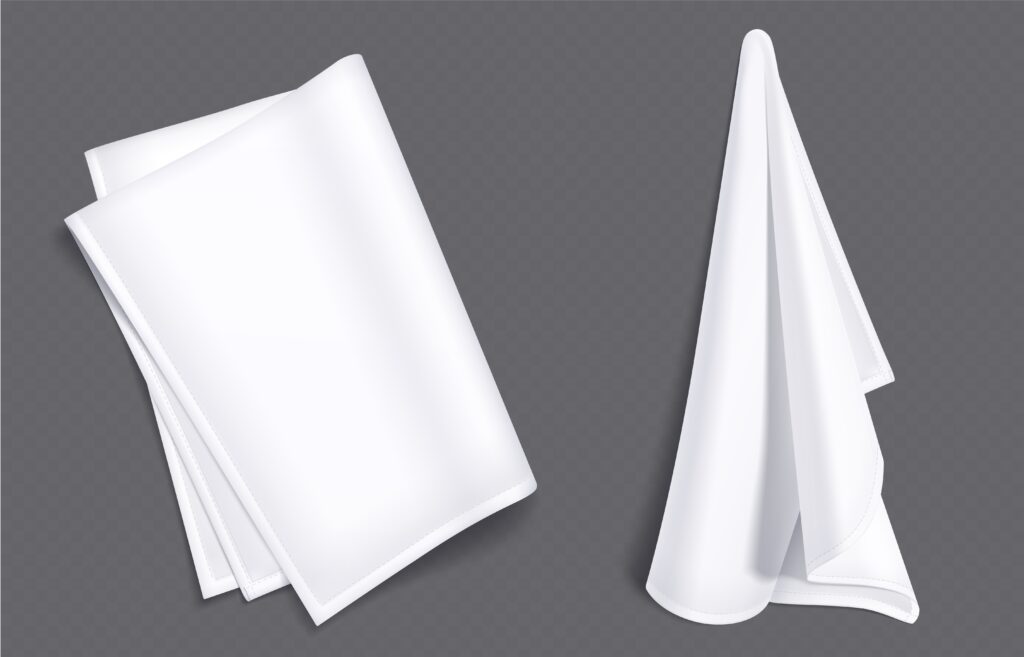
How to Choose the Right Dish Towel
Now comes an important question: 'How to Choose the Right Dish Towel?' Selecting the optimal method for kitchen sanitation involves considering your lifestyle, preferences, and priorities. Here's a step-by-step guide to help you make an informed choice:
Assess Your Needs:
Determine your typical kitchen routine, including the number of dishes you wash, your storage space, and your commitment to sustainability.
Evaluate Convenience:
Decide whether you prefer the hands-on approach of using dish towels or the hands-free nature of a drying rack.
Consider Hygiene:
Take into account the level of hygiene you require. Are you willing to commit to frequent washing, or do you prefer the reduced bacterial risk of a drying rack?
Calculate Costs:
Estimate the long-term costs of using dish towels (detergent, water, replacement) versus investing in a quality drying rack.
Environmental Impact:
Think about your eco-footprint. Are you looking for a more sustainable option to reduce waste and energy consumption?
Space Management:
Evaluate your kitchen space and whether you can accommodate a drying rack without sacrificing usability.
Personal Preference:
Ultimately, choose the method that aligns with your preferences and values.
Conclusion
In the age-old battle between dish towels and drying racks for kitchen sanitation, both sides bring valid points to the table. Dishcloth towels offer immediate convenience but require meticulous care to avoid bacterial growth. Drying racks, on the other hand, excel in providing a hands-free, eco-friendly, and hygienic drying solution. The decision rests on your preferences, lifestyle, and commitment to maintaining a clean and healthy kitchen environment.
Frequently Asked Questions (FAQs)
Which dish towels are most absorbent?
Dishcloths made from materials like microfiber and cotton terry are known for their high absorbency. These materials can effectively soak up moisture from dishes and surfaces.
Why dish cloths?
Dish cloths offer versatility in the kitchen. They are great for scrubbing, wiping, and cleaning various surfaces, making them a handy tool for tackling different tasks.
What causes dish towels to smell?
Dish cloths can develop unpleasant odors due to the accumulation of food particles, moisture, and bacteria. If not properly washed and dried, these factors can contribute to a lingering smell.
When does a dish towel turn into a tablecloth?
In Italian cuisine, a "strofinaccio" is a dishcloth that can be used as a makeshift tablecloth for informal meals. This practice adds a rustic charm to dining settings.
How long do dish towels last?
The lifespan of dish cloths varies based on usage, care, and material. Well-maintained dishcloths can last several months to a couple of years before showing signs of wear and tear.
Where to hang dish towels in the kitchen?
Hanging dishcloth towels near the sink or stove is a convenient placement. Hooks, towel bars, or over-the-door hangers can be used to keep them within easy reach.
Where to store dish towels in the kitchen?
Store clean and dry dish towels in a clean and dry location away from direct sunlight to prevent odors and maintain their freshness.
Can a dish towel be flushed down the toilet?
No, dishcloth towels should never be flushed down the toilet. They are not designed to dissolve like toilet paper and can cause plumbing issues.
How to fold a dish towel?
To fold a dishcloth towel, start by folding it in half lengthwise, then fold it in half again or roll it up for compact storage.
What are dish towels used for?
Dishcloth towels are versatile kitchen essentials used for drying dishes, wiping surfaces, handling hot cookware, cleaning spills, and more.
Can I use dish towels and a drying rack together?
Absolutely! Utilizing both methods can provide a well-rounded approach to kitchen sanitation.
How often should I wash my dish towels?
To prevent bacterial buildup, it's recommended to wash dish towels every 2-3 days.
Do drying racks work for all types of dishes?
Yes, most drying racks are designed to accommodate various dish sizes and shapes.
Are there any alternatives to traditional dish towels?
Yes, you can explore reusable microfiber cloths as an alternative to traditional dishcloth towels.
Can I put plastic items on a drying rack?
Generally, it's safe to place plastic items on a drying rack but be sure to check manufacturer guidelines for specific items.
Is a dish cloth better than a sponge?
Both have their advantages. Dish cloths are more reusable and can be washed thoroughly, while sponges can trap more bacteria and may need frequent replacement.
Related Articles: 1. Best Towel Material Guide 2023: Types, Pros & Cons

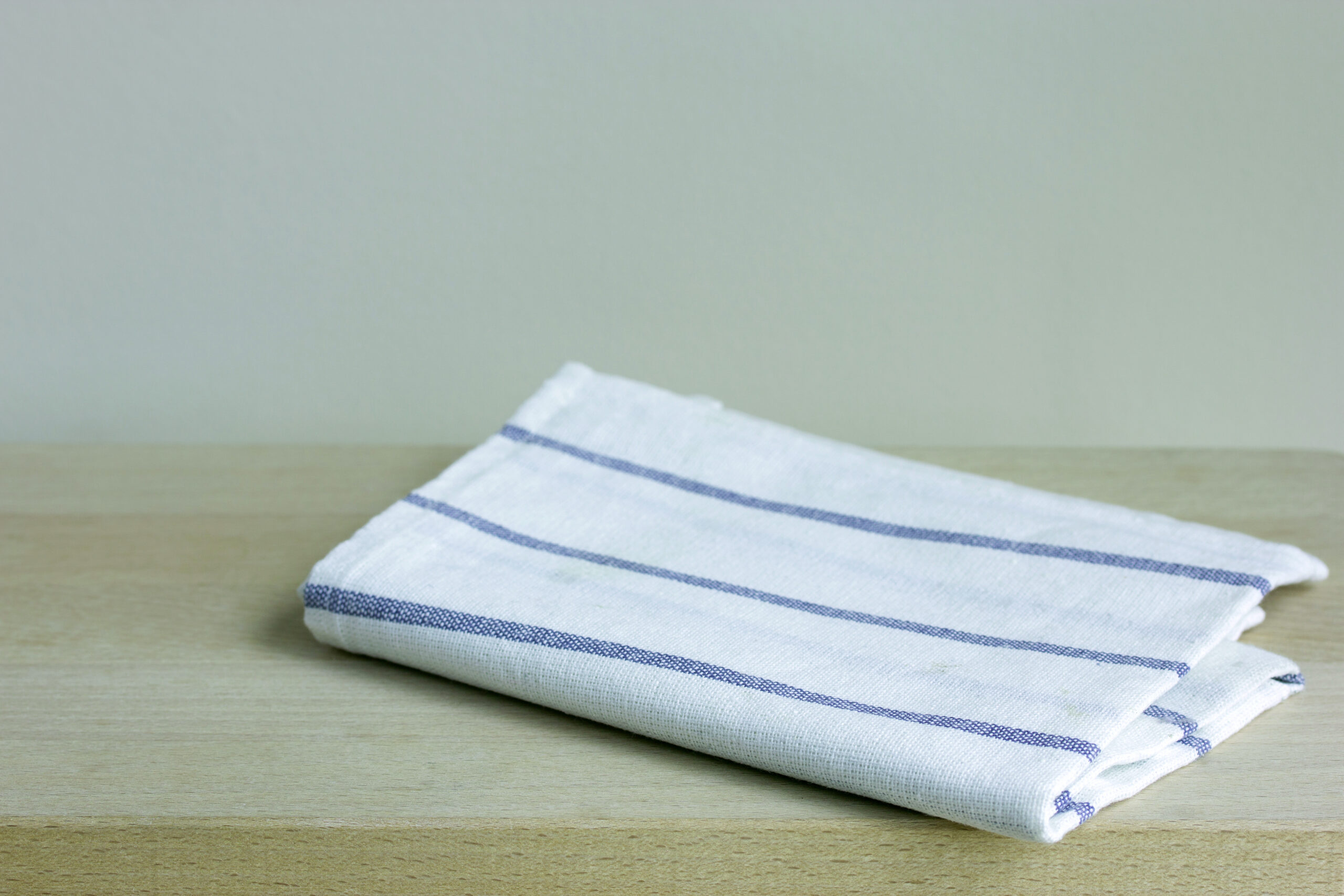
1 thought on “Dish Towel or Drying Rack: A Comprehensive Review 101”
Comments are closed.